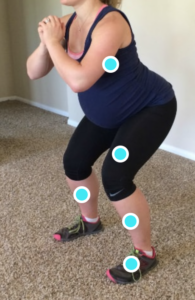
Should we squat?
Why Squatting in the Third Trimester Isn’t Always the Answer for Shorter Labors in the United States
Squatting has long been praised as the ultimate preparation for birth, a posture that opens the pelvis and strengthens the body for the intensity of labor. But what if, for certain babies and certain labors, it’s actually working against progress rather than for it? What if the widespread recommendation to “just squat more” is inadvertently contributing to longer, more difficult labors?
The Modern Dilemma: Malpositioned Babies and the Sedentary Lifestyle
In the United States, the way we move—or rather, don’t move—sets the stage for fetal malposition. Hours spent sitting behind desks, driving in cars, lounging on couches—each of these daily postures encourages an unnatural tilt of the pelvis, one that doesn’t necessarily support a baby’s best position for birth.
My very particular view on squatting have also formed from my time living in rural West Africa, where my patients had very short labors compared to mothers in the United States. Mothers in West Africa spend a tremendous amount of time standing or squatting and rarely sit of cushy upholstered furniture or in vehicles. I have observed that they squat with their feet parallel, and toes are not pointing outward. The generally seem to have more balanced pelvic ligaments and proper tilt to their pelvis, as they are not sitting behind desks much of the day and stay truly active. This is an advantage in their births that most Western women don’t have unless they live a homesteading lifestyle with lots of physical chores or the like.

When a baby is positioned poorly before labor even begins, the body’s natural response isn’t to push them deeper into the pelvis but to reposition them first. This is something I came to realize after noticing a pattern: all of my yoga teacher’s clients who practiced and encouraged deep squatting throughout pregnancy were confused as to why they were experiencing extremely long labors despite being incredibly fit. Their babies weren’t descending smoothly—instead, they were getting wedged in unfavorable positions, prolonging the process significantly.

Why Squatting Can Be Counterproductive for a Malpositioned Baby
While squatting is beneficial in certain stages of labor, particularly when pushing, using it excessively in the third trimester or early labor may cause issues when the baby is not well-positioned. Here’s why:
- A Poorly Positioned Baby Needs Space to Reposition – If the head is not well-applied to the cervix, the uterus often tries to lift the baby slightly out of the pelvis to allow for realignment before descent. Deep squatting can work against this natural process by forcing baby downward prematurely.
- Malpositioned Babies May Cause Long, Inefficient Contractions – When labor is progressing slowly, with long gaps between contractions, it is often because the uterus is attempting to shift the baby into a better position. Forcing baby deeper with squats may reinforce an already problematic angle.
- A Puzzle Piece Analogy – Imagine trying to fit a puzzle piece in the wrong way—it doesn’t slide in effortlessly. The body, in its innate wisdom, sometimes needs to lift and rotate the baby before allowing them to engage properly. Squatting too soon may prevent this necessary correction.
A Better Approach: Helping Baby Reposition Before Squatting
Rather than emphasizing deep squatting in late pregnancy or early labor, we should focus on movements that create space and encourage optimal positioning first:
- Spinning Babies’ Forward-Leaning Inversions – A technique that allows the baby’s head to lift slightly out of the pelvis, giving them the chance to readjust.
- Miles Circuit – Use these three positions, along with curb walking and going up stairs two at a time (slowly and safely).
- Steep Forward-Leaning Inversions with Gentle Belly Lifts – This maneuver can help encourage a tucked chin and better engagement.
- Mindful Sitting Positions – Avoid deep slouching or reclining, which can encourage posterior positioning. Sit only on hard surfaces with good posture and use pillows to adjust posture in the car so knees are below the hits and back is upright. Bucket seats are an enemy.
- Encouraging Hands to Move – If the baby’s hands are near their face, lightly pressing the lower belly while inverted may encourage them to reposition.
When Squatting Becomes Valuable
Squatting has its place—just not always in the way we’ve been taught. Once the baby is well-positioned and labor has entered the pushing phase, squatting can be an incredible tool to create space and shorten the second stage of labor. However, for the many women experiencing long, stalled labors due to malposition, understanding when not to squat may be just as important as knowing when to use it.
👉 Read my article on why we should stop obsessing over getting the baby deeper into the pelvis here.
👉 Learn how to properly squat in the third trimester from this video.

By shifting our focus from generic fitness preparation to intentional, physiological birth preparation, we can work with the body’s natural rhythms rather than against them. Birth is a dance of movement and surrender—timing, positioning, and instinct all play a role in how smoothly it unfolds.
“The most important thing a woman needs during labor is not a set of medical tools and interventions, but the presence of someone who believes in her.”
– Khadijah Cisse, Midwife

